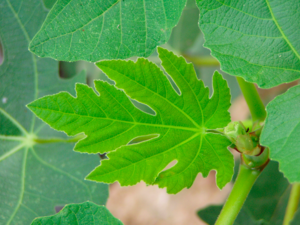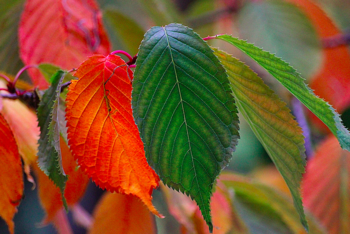
Leaves form an organ of vascular plants.[1] Leaves are appendages to stem parts of plants.
The singular term is leaf, the plural term is leaves or foliage, the latter term referring to leaves collectively.[1]
Description[edit | edit source]
Leaves vary in size and shape, depending on the species of plant and the purposes of the leaf. Leaves can be flat and broad (the most common structure), spindly and needle-like, succulent and juicy, or other variations. Each leaf formation type will be a response to the local environmental conditions.
The greenness of leaves varies depending on species and location. For example, shade leaves tend to be brighter in colour, so as to capture as much light as possible.
Deciduous leaves change colour in the autumn/fall seasons, to shades of red, orange, yellows and browns.

Role of leaves[edit | edit source]
Leaves behave in a manner similar to solar panels, in that they use the process of photosynthesis to transform the sun's energy, carbon from the atmosphere and water from the soil into food for the plant.
Photosynthesis requires chlorophyll, which is a green pigment. The greener the leaf, the more efficient it is likely to be in using the available light.
Leaves release water through the pores located on the underside (the side usually facing downward when a plant is viewed from the top down). This allows more water to be drawn up through the plant, through both stem and leaves, and water from the soil is taken up via the roots.